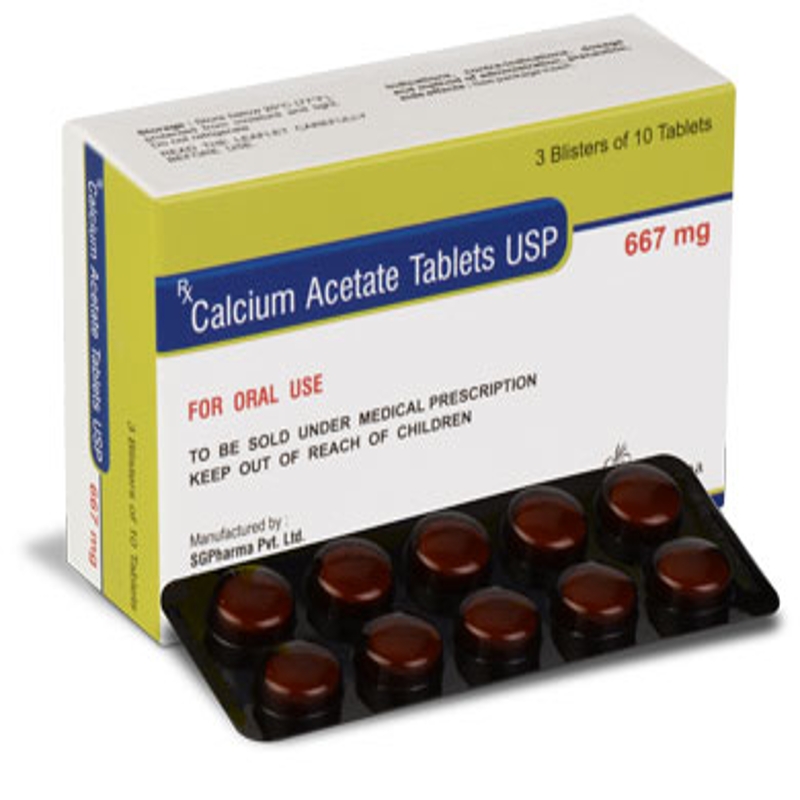-
Categories
-
Pharmaceutical Intermediates
-
Active Pharmaceutical Ingredients
-
Food Additives
- Industrial Coatings
- Agrochemicals
- Dyes and Pigments
- Surfactant
- Flavors and Fragrances
- Chemical Reagents
- Catalyst and Auxiliary
- Natural Products
- Inorganic Chemistry
-
Organic Chemistry
-
Biochemical Engineering
- Analytical Chemistry
-
Cosmetic Ingredient
- Water Treatment Chemical
-
Pharmaceutical Intermediates
Promotion
ECHEMI Mall
Wholesale
Weekly Price
Exhibition
News
-
Trade Service
Hemophagocytic lymphohistiocytosis (HLH) is a fatal immune overactivation disease, which is regarded as a typical cytokine storm (CS), and sepsis caused by a known or suspected infection is also regarded as CS.
HLH and sepsis are clinically similar and have similar immunopathology, which makes the diagnosis extremely difficult.
Because the treatment methods of the two are quite different, the differential diagnosis is very important.
The clinical similarity between HLH and sepsis has led some researchers to believe that the underlying inflammatory process may be similar.
Although the activation of T cells in HLH patients is enhanced, the comparison with sepsis or other hyperinflammatory states has not been clearly described.
In order to further distinguish the immunopathology of HLH and sepsis, the researchers analyzed the T cells of patients with HLH and sepsis, and found a phenotype (especially CD38) that can easily distinguish between the two.
Yimaitong organizes the main contents of the research as follows for the reference of readers.
Research methods The research samples were mainly from patients with HLH or sepsis in multiple centers in the United States, some samples were from subjects of the HIT-HLH trial (NCT01104025), and the control samples were from patients without known infections.
HLH patients meet the HLH-2004 diagnostic criteria, and sepsis patients meet the severe sepsis criteria of the 2005 International Pediatric Sepsis Definition Consensus Conference.
The data of HLH patients comes from pre-treated samples.
HLH pre-treatment is defined as corticosteroid treatment for <2 weeks, and there is no etoposide or other immunosuppressive treatment for HLH.
Patients with sepsis were sampled within 48 hours after diagnosis and had not received corticosteroid therapy before the study sample was drawn.
ROC curves were compared between HLH patients, sepsis patients and healthy controls.
The results of the study showed that peripheral blood T cell activation status is easy to distinguish between HLH and early sepsis.
The mouse model has confirmed that T cell antigen activation is a key part of the pathophysiology of HLH, rather than a key part of sepsis.
Human T cells activated by antigens in the body can be identified by the expression of CD38 (bright) and HLA-DR+, reaching a peak value 1-2 weeks after infection or vaccination.
It is reported that the expression of HLA-DR in HLH patients is up-regulated.
However, the expression of CD38 has not been described by studies, and the two markers have not been fully studied in sepsis.
This study analyzed the peripheral blood T cells of patients with HLH (N=43, median age 2.
6 years [range: 0.
2-25]) and sepsis (N=19, median age 3 years [range: 0.
2-17.
5]).
The results showed that CD38high or CD38high/HLA-DR+ T cells in HLH patients expanded, but most patients with sepsis did not.
This difference is large.
And ROC analysis shows that the presence of CD8+ or CD4+ T cells can easily distinguish HLH patients from early sepsis patients.
The increase in the number of CD38high/HLA-DR+CD8+ T cells is an effective marker of active HLH.
Because activated CD8+ T cells are of unique importance in HLH animal models, they are more important than CD4+T in distinguishing HLH from sepsis.
The cells are obvious.
The researchers analyzed the significance of the presence of activated CD8+ T cells in HLH patients.
The results showed that although the ratio of CD8 to CD4 in HLH patients is only slightly higher, in most HLH patients, activated (CD38high/HLA-DR+) The proportion of CD8+ T cells is five times that of activated CD4+ T cells.
The researchers evaluated the number of CD38high CD8+ T cells in 2 HLH patients treated with etoposide and dexamethasone, and found that the number of these cells decreased after treatment, and their kinetics were similar to soluble CD25 (sCD25) and ferritin levels.
.
Therefore, in all patients, activated (CD38high/HLA-DR+) CD8+ T cells appear to be a broad feature of active HLH.
The activated CD8+ T cells in HLH patients are mainly effector memory T cells with Tc1/cytotoxic differentiation, which can show evidence of recent and continuous activation.
In order to further describe the activated T cell status of HLH, the researchers studied CD38high/HLA-DR +CD8+ T cell differentiation and function.
It is worth noting that these cells are basically absent in most healthy children or patients with sepsis.
Similar to previous reports, the researchers found that the activated CD8+ T cells in HLH patients have obvious effect memory phenotypes and have a differentiation effect to cytotoxic function.
The researchers also found that CD38highCD8+ T cells exhibit type 1 polarization, express type 1 cytotoxic T cell (Tc1) marker CXCR3, and secrete IFN-g and TNF-a under stimulation.
To confirm that CD38high/HLA-DR+ T cells are "highly activated" T cells, the researchers evaluated a variety of other markers related to T cell activation.
Similar to other cases of dengue virus infection or T cell activation, many cells with this phenotype express programmed cell death protein 1 (PD-1) and CD95 (Fas).
A large proportion of patients are positive for Ki67 and γH2AX (markers of DNA replication and damage), which indicates recent lymphocyte proliferation.
The researchers also found that most of the activated CD8+ T cells in HLH patients showed down-regulation of CD5, which is consistent with previous reports.
Similar to the pattern of CD38high/HLA-DR+CD4+ T cells (although not obvious).
However, none of these markers suggest T cell activation in patients with sepsis.
Tissue infiltrating T cells in HLH patients are highly activated and produce IFN-γ T cells.
Research evidence shows that T cell activation in HLH patients occurs in the antigen presentation response, especially in lymphoid tissues and other tissues.
From a clinical perspective, damage to various tissues (such as bone marrow and brain) may be the key to T cell activation.
The researchers collected samples from 10 HLH patients, including bone marrow aspirate fluid, cerebrospinal fluid (CSF), lymph node biopsy, and peripheral blood samples and analyzed T cell phenotypes.
The results showed that the degree of T cell activation in all tissues was high, and in most cases was higher than the level in peripheral blood samples of the same period.
The T cells in the CSF sample were significantly activated: about 80% of the CD8+ T cells were CD38high/HLA-DR+CD8+ T cells.
In addition, CD8+ T cells in CSF or bone marrow are highly polarized to produce IFN-γ, and are more likely to produce IFN-γ than T cells in peripheral blood.
It is worth noting that these CSF samples were obtained from patients with HLH who have effects on the central nervous system, including epilepsy, focal neurological deficits, and/or brain magnetic resonance imaging changes.
Therefore, the analysis of tissue-derived cells from HLH patients shows that HLH is a disease of excessive T cell activation in the affected tissues, and the analysis of peripheral blood lymphocytes may often underestimate the degree of T cell activation in patients.
CD38high/HLA-DR+CD8+ T cells can distinguish HLH from sepsis and healthy people.
Studies have shown that activated T cells (mostly CD8+) are abundant in HLH patients, but very much in sepsis or healthy control patients.
less.
These activated T cells can be defined by the expression of CD38 or HLA-DR or two markers.
The researchers assessed the potential diagnostic value of CD8+ or CD4+ T cells in these populations, comparing HLH patients with sepsis or healthy controls.
The optimal threshold was defined for each population and proved that compared with activated CD4+ T cells, activated CD8+ T cells are generally better able to recognize HLH.
Among the different methods to identify activated T cells, whether HLH is compared with sepsis or healthy controls, CD8+CD38high/HLA-DR+ are the most helpful diagnostic parameters.
These data strongly indicate that CD8+/CD38high/HLA-DR+ T cells are an excellent marker for the diagnosis of HLH.
Research conclusions This research describes the T cell phenotype of HLH for the first time.
T cell phenotype is easy to distinguish between HLH and sepsis, and has a strong diagnostic utility.
Reference source: Vandana Chaturvedi, Rebecca A.
Marsh, Adi Zoref-Lorenz, et al.
T-cell activation profiles distinguish hemophagocytic lymphohistiocytosis and early sepsis.
blood 29 APRIL 2021.
VOLUME 137, NUMBER 17.
Click "read the original text", let's work together progress







